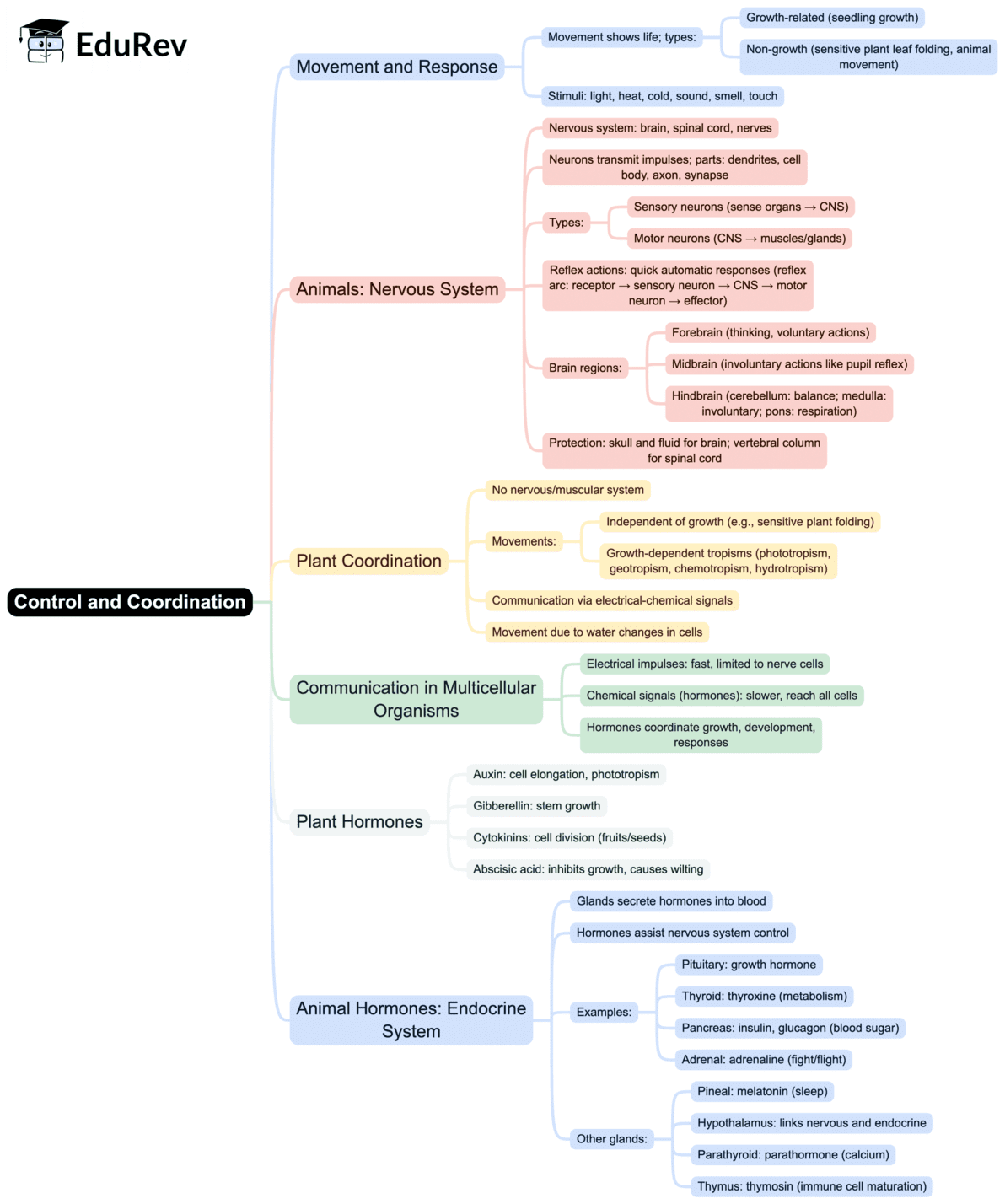Class 10 Exam > Class 10 Notes > Science Class 10 > Mind Map: Control & Coordination
Mind Map: Control & Coordination | Science Class 10 PDF Download

The document Mind Map: Control & Coordination | Science Class 10 is a part of the Class 10 Course Science Class 10.
All you need of Class 10 at this link: Class 10
|
80 videos|661 docs|80 tests
|
FAQs on Mind Map: Control & Coordination - Science Class 10
| 1. What is the role of the nervous system in control and coordination? |  |
Ans. The nervous system is essential for control and coordination as it processes information from sensory organs, sends signals to muscles, and regulates bodily functions. It consists of the central nervous system (CNS) and the peripheral nervous system (PNS), working together to maintain homeostasis and respond to stimuli.
| 2. How do hormones contribute to control and coordination in the body? |  |
Ans. Hormones are chemical messengers produced by glands in the endocrine system. They travel through the bloodstream to target organs, regulating various physiological processes such as growth, metabolism, and mood. Hormonal control complements the nervous system, allowing for longer-lasting effects on body functions.
| 3. What are the main differences between the nervous system and the endocrine system in terms of control and coordination? |  |
Ans. The nervous system provides rapid and short-term responses through electrical impulses, while the endocrine system offers slower, longer-lasting effects via hormonal signals. The nervous system is involved in immediate reactions, whereas the endocrine system regulates processes over a longer duration, such as growth and development.
| 4. What is the significance of reflex actions in control and coordination? |  |
Ans. Reflex actions are automatic responses to stimuli that occur without conscious thought. They are crucial for protecting the body from harm, allowing for quick reactions to dangerous situations. Reflex arcs involve sensory neurons, interneurons, and motor neurons, enabling rapid communication and response.
| 5. How do plants exhibit control and coordination? |  |
Ans. Plants exhibit control and coordination through hormonal responses and tropisms. Hormones like auxins regulate growth and response to environmental stimuli (e.g., light and gravity). Tropisms, such as phototropism and gravitropism, help plants orient themselves for optimal growth and resource acquisition.
Related Searches

















